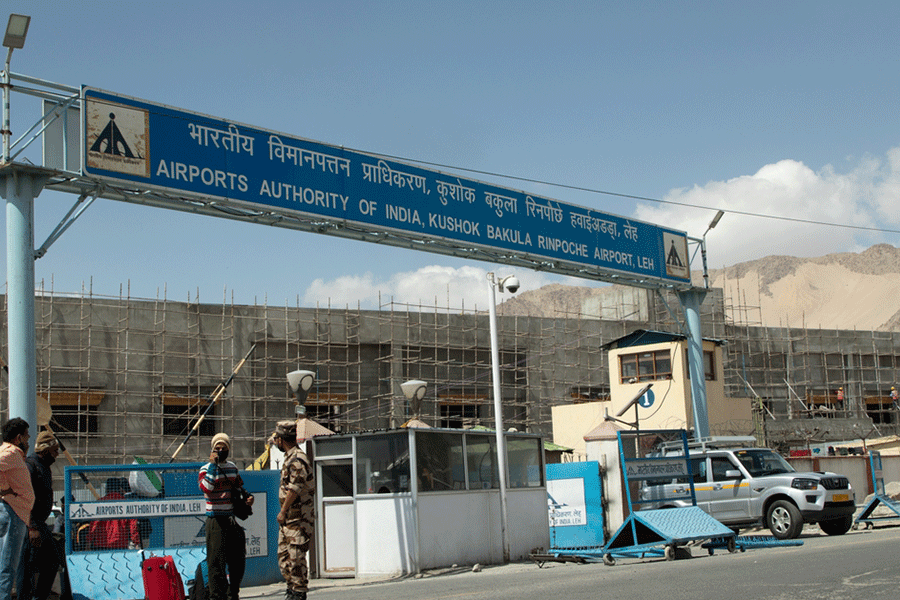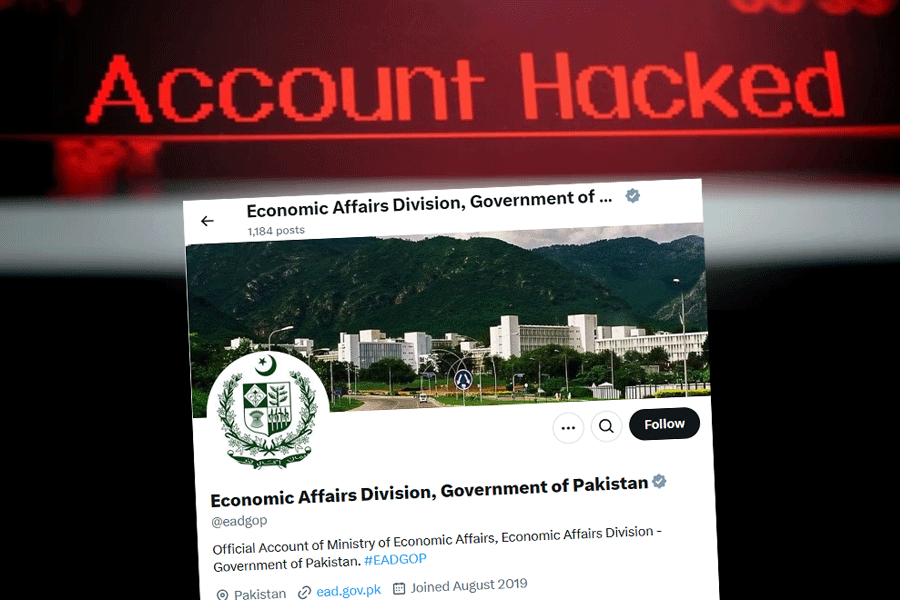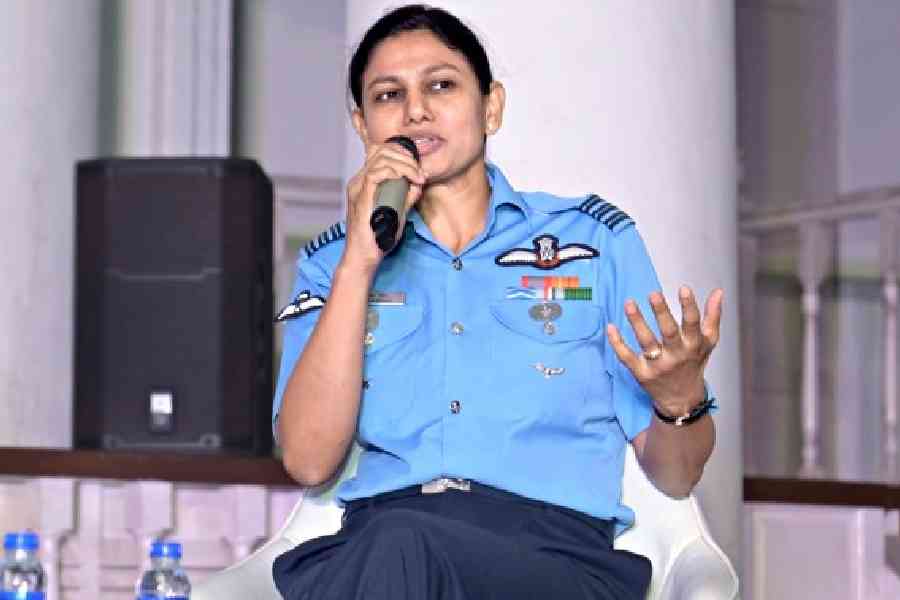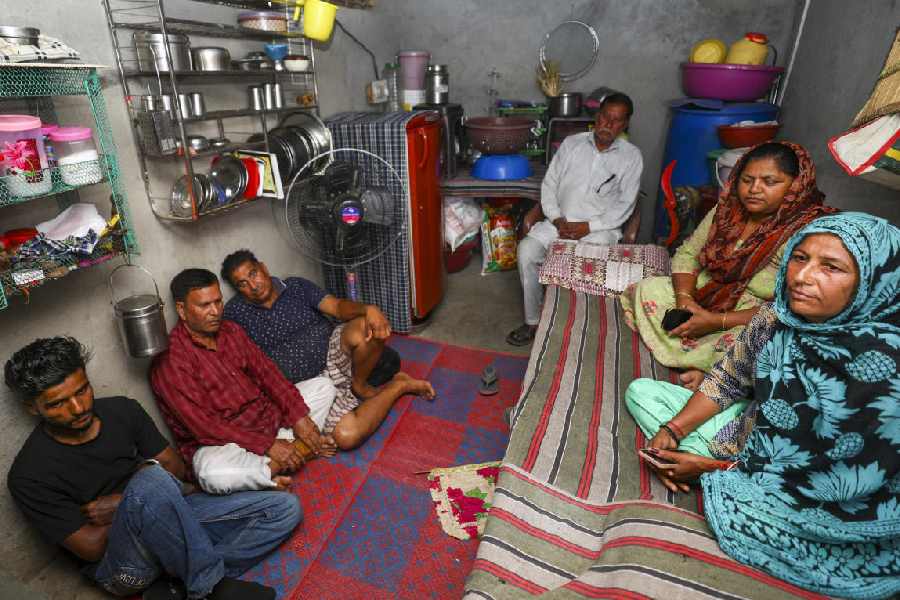 |
New Delhi, May 13: Aircraft circling overhead and burning up precious fuel before being allowed to land, spats over parking bays, overworked pilots and air traffic controllers coming to work bleary eyed —it’s a typical day at any major Indian airport today.
The chaos is worsening everyday. Some 13 chartered airlines (which do not fly on specific routes) — with names ranging from Confident Airlines to Shrines Airways — were given permission to start operations in the first four months of 2007.
An average of a dozen aircraft of various shapes and sizes ranging from Cessnas to Airbus 320s and Boeing 737-800s are being imported into the country every month.
The Delhi airport, which used to handle 525 take-offs and landings a day just a year ago, today has to deal with more than 650 aircraft take-offs and landings everyday. In the peak hours of the morning and evening, the capital's airport handles as many as 40 flights in an hour.
Realising that there is little scope for more flights to come in or leave from the overworked airport, the government has ordered a cap on the number of flights from or to Delhi and Mumbai this summer. Besides, the government has stopped issuing clearances for new scheduled airlines till the major airports revamp their infrastructure to be able to cater to the additional flights.
“Yes, it's a chaotic situation out there and we do keep seeing spats over slots and parking bays,” admits Harsh Vardhan, former chairman of Vayudoot who runs a consultancy for the aviation industry. The airline industry has grown at a breakneck speed. A dozen scheduled airlines, including Jet Airways, Indian, Air Sahara, Air Deccan, Spicejet, Paramount, Kingfisher and Indigo, which fly on fixed routes, flew about 32 million passengers in 2006, nearly 45 per cent more than the year before.
Another eight scheduled airlines are waiting to take off — some are waiting for first-stage approvals while others are getting ready for test flights. The airlines in India are estimated to have placed orders to buy between 400 and 450 new planes.
“No one imagined we would grow at such a speed. The scheduled airline industry grew like nobody’s business and, unlike the boom in the early 1990s, we have not had a single airline closure till date. Every airline is flying despite losses and every flight on major routes reports over 70 per cent seat occupancy” says U.K. Bose, former chief executive of Air Sahara.
Several Indian companies are sitting on cash piles and have decided to venture into the skies with airline and helicopter charters sensing a lucrative business opportunity.
These chartered airlines take top executives on unscheduled business flights, carry rich pilgrims to Himalayan temples, and middle-class Indians on package holidays. Some air charters allow you to part-own an aircraft with other businessmen and use them for your charter flights whenever you please.
Some corporate houses have always sought aircraft exclusively for their executives’ use. “The interesting thing is that many of the smaller and medium sized companies have started to buy aircraft,” says Sudatto Sen, aviation market analyst, with a Hong Kong based merchant bank.
Companies like India Bull Real Estate, Bellary Iron & Ores Pvt Ltd, Touchwood Entertainment, Jubiliant Enpro and Mundra Special Economic Zone have joined the ranks of companies buying Beachcraft or Gulf Stream V for use by top executives.
In the last four months, 12 Cessnas, two Beach, four King Air, two Gulfstreams, three Augustas and 1 Hawker were among the aircraft imported into India for private use.
Naturally, India's metro airports are finding it hard to handle the rush of flights.
“There is a lot of congestion at the metro airports and this will continue for some time till we have managed to revamp our airports. Frankly, it is lack of planning that has bogged us down,” says Bose.
There are plans to set up second airports at Delhi and Mumbai. A second airport has been proposed for Calcutta but has not yet reached the drawing board stage.
“If these plans fructify, the Indian aviation scene will be a lot less chaotic. But if we don’t speed up our revamp plans, we could be heading for disaster in the skies,” says Bose.










